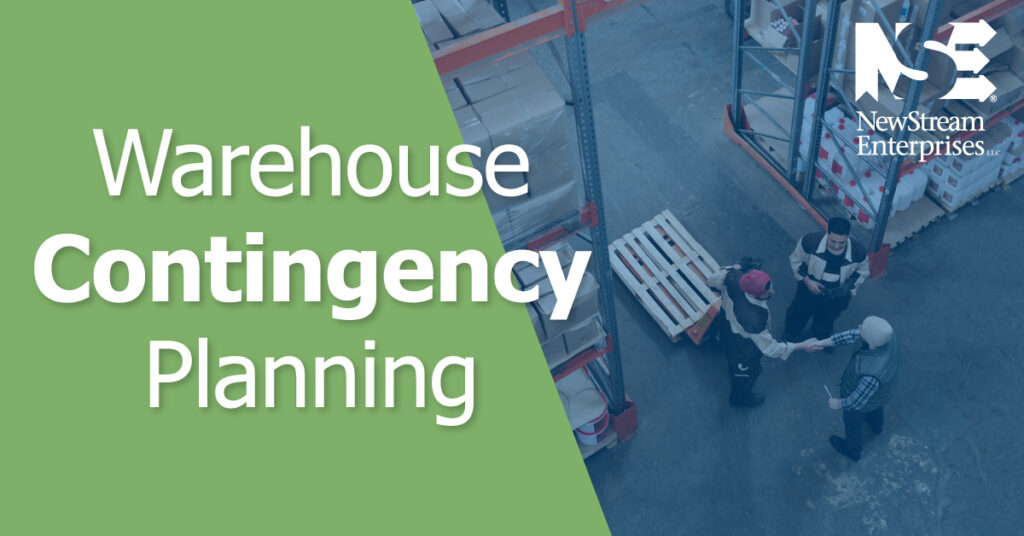A crisis in the supply chain can happen at any time. Currently, in 2020, the world is encountering unprecedented disruptions due to a new coronavirus. However, a crisis can come in a variety of forms. It could be a widespread problem like COVID-19 or a localized challenge, like a fire destroying a warehouse.
Whatever the reason, companies that react quickly and have a warehouse contingency plan in place are able to continue their business with minimal disruptions. The next supply chain crisis doesn’t have to cripple your business.
Developing Contingency Plans
Emergency planning (also known as contingency planning) is the process of preparing an organization’s assets and operations for ongoing accessibility and functionality in the event of a disaster. In business contingency planning, it’s important to bring together different stakeholders to discuss possible crisis scenarios.
Many businesses forego creating a “Plan B” that addresses the worst case scenario because they don’t have a formal business planning process in place or they are too focused on day-to-day activities to worry about the future. Contingency planning can be a powerful strategy for highlighting potential weaknesses and becoming more proactive.
Contingency Planning in Warehousing and Distribution
Imagine that a tornado destroys a distribution facility, and this natural disaster leaves the company struggling to find a way to fulfill customer orders. A proactive contingency plan could have included the creation of separate geographic locations for different product lines in order to mitigate the risk of a localized crisis bringing all operations to a standstill.
Using an optimization model and defining a resource allocation strategy when planning for the potential impact of an unexpected and uncontrollable disruption is a great insurance policy should a serious problem occur. In evaluating their supply chain annually, companies should refresh their contingency plans, assess new risks and analyze how their crisis preparation efforts have come along.
When a widespread supply chain crisis occurs, even the best organized companies will take a hit. In the aftermath, the company with a great warehouse contingency plan is better able to resume normal service to its customers than the one without. In addition to having a plan in place, companies need the right people to execute that plan.
Here are the basic points to cover when developing a contingency plan:
- Create a clear contingency planning process with team members designated to roles
- Define possible disruption scenarios your business could face
- Understand your transportation and warehousing options
- Outline steps needed to remedy each disruption scenario
- Create redundant systems
- Reach out to vendors and partners for help
- Test your plan
- Know when to activate your contingency plan
- Continually reevaluate your plan and update requirements as needed
Warehousing Services as Part of Your Contingency Plan
Finding storage areas in an emergency, no matter how well prepared you are, can be problematic. If you are not able to access your standard work site and warehouse, the lack of adequate storage space for supplies and equipment can lead to significant operational difficulties.
Outsourcing warehousing and distribution services can be a great solution. Warehouse space can be rented for both short- and long-term needs. Companies find this is a better option than a makeshift on-site storage room or even a makeshift warehouse building for excess inventory because outsourcing includes the manpower and processes needed for superior inventory management.
Inventory in outsourced warehouse buildings can be kept ready for quick turnaround to ensure a company can continue to meet customer needs in a crisis. When considering warehouse and distribution services, be sure to consider storage locations as well as the availability of supplies and equipment related to your distribution channels in order to optimize transportation costs.
Partnering with NewStream Enterprises, LLC is a highly effective strategy because we are a trusted warehousing and distribution operation centrally located in Springfield, Missouri. Our facilities allow you to store and deliver your products anywhere in the U.S. within 48 hours.
What’s more, we’re an organization with carefully crafted contingency plans in place that include maintaining a strong cash position. Partnering with a business that has strategic cash reserves is a smart move that can make the difference during a recession, natural disaster or pandemic that causes other businesses to cut back on services or eliminate them altogether. Our team is here for you in good times and challenging times.

